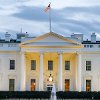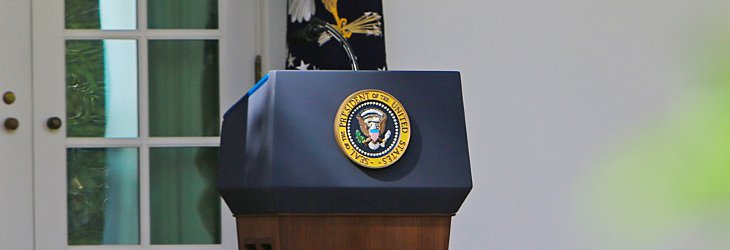Writing in defense of American political communication at the turn of the 21st Century, Parry-Giles and Parry-Giles (2001) lamented that “intellectual leaders repeatedly tell Americans that political communication is baseless, is in crisis, and is lacking in substance.” Indeed, almost twenty years later, the same metaphors used to describe American political communication persist. Political communication is “diseased, dirty, infected, flawed, poisoned, and/ or hopelessly polluted by money and special interests” (Parry-Giles & Parry-Giles, 2001).
With the recent resurgence of white supremacy rhetoric in mainstream political discourse and the unprecedented amount of corporate money infused into our political process, American political communication has certainly suffered a setback. While American political discourse can be described with the aforementioned metaphors, the academic study of political communication deserves a more thorough elucidation.
This guide to research in political communication is American in focus, but many of the theories and concepts discussed below have been and continue to be applied to the political and communicative contexts of other nations. Like with the study of other facets of Communication, political communication phenomena rarely happen in isolation, and there is a certain degree of universality in these concepts.
Defining Political Communication
To begin that elucidation, it is important to first define political communication. Like many other fields and topics in Communication Studies, scholars do not always agree upon a universal definition. The lack of scholarly agreement regarding a widely accepted definition can be attributed to the nature of political communication – it is incredibly interdisciplinary, with scholars approaching the concept from backgrounds ranging from political science to communication, from psychology to rhetoric, and even from sociology to history (Kaid, 2004).
In its most basic form, political communication can be defined as “the role of communication in the political process” (Kaid, 2004). Other researchers further emphasized the role of communication in political dynamics in local, state, national, and international spheres, saying that the process is “an ongoing conversation” among actors in the political realm. This conversation typically occurs via mediated forms of communication, positioning communication scholars in an advantageous starting point to study the messages, the modes, and the effects of communication in the political sphere (McKinney, Kaid, Bystrom, & Carlin, 2005).
However, when placed upon a timeline of development, the nuance embedded within the study of political communication becomes clearer. In their editor’s introduction to The Oxford Handbook of Political Communication entitled “Political Communication: Then, Now, and Beyond,” Kenski and Jamieson (2017) began defining political communication through examining its history. They considered definitions from early work in political communication, the various definitions employed by political communication divisions within academic associations like the National Communication Association (NCA) and the International Communication Association (ICA), and definitions utilized by contributors to their handbook to bring this nuance to the fore. Ultimately, these sets of definitions help us trace how the discipline came to be and further our understanding of political communication.
Political Communication: The Past to Present
The study of political communication came to be through the influential work of Harold Lasswell, a researcher who is studied by both political science and communication scholars. Early political communication utilized his combination of the classic definition of politics and the traditional model of communication to produce a definition of political communication that typically resembled “the study of who gets what, when, (and) how by saying what, in which channel, to whom, with what effect” (Kenski & Jamieson, 2017).
The steady institutionalization and simultaneous legitimization of Communication Studies as an academic field across the United States and around the world helped create standing political communication divisions within the NCA and ICA. The political communication division in both the NCA and ICA, as well as their counterparts in political science associations, employ different definitions of political communication while sharing significant overlap.
For example, the NCA Political Communication Division defines political communication as: “the communicative activity of citizens, individual political figures, public and governmental institutions, the media, political campaigns, advocacy groups and social movements,” while ICA’s Political Communication Division refers to the “interplay of communication and politics” among the aforementioned actors in the realm of politics (Kenski & Jamieson, 2017).
Given our current socio-political climate, political communication researchers are again reconsidering their definition of the term. Concerns surrounding “power” and the “exercise of power” through symbolic means prompted contributors to Kenski and Jamieson’s (2017) The Oxford Handbook of Political Communication to define political communication as “making sense of symbolic exchanges about the shared exercise of power” and “the presentation and interpretation of information, messages or signals with potential consequences for the exercise of shared power.”
Researching Political Communication: Central Theories and Concepts in Political Communication
The broad scope of political communication offers scholars a multitude of areas to study, including, but certainly not limited to, political messages, public opinion, political news coverage, and the burgeoning use of social media in communicating politics. But how does one actually research political communication? This question is particularly poignant considering the multidisciplinary composition of political communication – and, to truly begin to answer this question, one must first consider their approach to research and what they hope to achieve with their approach. In other words, does one approach research from a quantitative, social scientific perspective? Or, is one guided by a more humanistic, qualitative perspective?
To help students gain a better understanding of the field, and perhaps find interest in a specialized area of political communication, it is helpful to categorize realms of political communication research into distinct themes, each of which has its own theories and methods. As a field, political communication can be broken down (but is certainly not limited to) to studying media, messages, and actors or institutions.
Political Communication and the Media
Amongst the nuance and varying foci of political communication research and definitions, several core tenets and concepts emerged and are still widely used in research today. In the realm of the media, scholars continue to probe its political functions primarily through the concepts of agenda-setting, framing, and priming. Ultimately, these concepts offer scholars explanatory power in describing the influence of media in political communication.
Agenda-Setting: Chief among these concepts is agenda setting. Broadly speaking, agenda-setting refers to the “media agenda,” or the issues, policies, and people deemed important by the media (Scheufele, 2000). In other words, “in choosing and displaying news, editors, newsroom staff, and broadcasters play an important part in shaping political reality. Readers learn not only about a given issue, but also how much importance to attach to that issue from the amount of information in a news story and its position” (McCombs & Shaw, 1972).
Framing: Since McCombs and Shaw (1972) first proposed agenda-setting, communication-based research has consistently relied upon notions of framing and priming as explanatory functions for agenda-setting. As such, agenda-setting, framing, and priming tend to be lumped together, sometimes making it difficult to parse.
Framing can be considered an “extension of agenda-setting” as framing relies upon thematic elements of agenda-setting. Framing and agenda-setting are used by scholars to explain “how issues or other objects (people, groups, organizations, countries, etc.) are depicted in the media than with which issues or objects are more or less prominently reported” and “both are concerned with ways of thinking rather than objects of thinking” (Weaver, 2007).
Priming: In the political communicative context, priming refers to the “impact that agenda-setting can have on the way individuals evaluate public officials by influencing the thematic areas or issues that individuals use to form these evaluations” (Scheufele, 2000). Priming is primarily a cognitive process, producing attitudes and beliefs, but sometimes extends into the behavioral realm as well. In the political sphere, issues that are more “salient or accessible in a person’s memory will most strongly influence perceptions of political actors and figures” (Scheufele, 2000).
By and large, the “theory of priming in political communication has been relegated to the study of news” with the American presidency driving the majority of research as the “American public is bombarded with coverage of the daily activities of the U.S. president” (Holbert et al., 2003). Holbert et al. (2003) extended the theory of priming to the critically acclaimed and almost universally praised television show The West Wing, ultimately arguing that the intimate, behind-the-scenes portrayal of the American president primed viewers to have a more favorable and generally positive view of the presidency.
Political Messaging and Communication Methods
Perhaps the majority of the negative connotations associated with political communication stem from the realm of political messaging. While political messaging certainly occurs in other settings, the most prominent instance of the phenomenon appears during election cycles. Many Americans reported suffering from “election fatigue,” or feeling overwhelmed and annoyed at the sheer volume and even the quality of election related political messaging. Historically, political communication scholars studied television advertisements and campaign debates as a form of political messaging. Recently, with the rise of social media, scholars started to examine the proliferation of political messaging across various platforms and sites.
Advertising: The vast majority of scholarly work done on political advertising primarily focuses upon television advertisements. As such, research regarding political television ads tends to exemplify the interdisciplinary nature of political communication, utilizing historical, sociological, and communicative perspectives. However, political advertising is not limited to modern America and the television screen. Political advertisements date back to the early Republic and have changed throughout American history. Scholars have studied political posters, pamphlets, magazine advertisements, and radio commercials through a communicative lens, probing the embedded message, dissecting its argumentative strategy and effectiveness, and discussing audience and reach.
Campaign Debates: For much of American history, political debates served as a primary means for American citizens to hear political messaging. When much of the country still resided in more rural areas, political debates were oftentimes a highly anticipated town event and many flocked from the countryside to hear candidates for office debate and discuss the issues of the day. Political communication scholars studying these pre-electronic debates rely upon sometimes wildly inaccurate or biased transcripts of the debate or equally partisan newspaper coverage of the event and try to accurately portray a candidate’s message or argument.
Since the first televised presidential debate between Senator Kennedy and Vice-President Nixon in 1960, scholars have examined a mixture of style, delivery, appearance, and messaging. As political debates progressively grew to rely more upon a “sound bite” model, scholars of political communication have focused on those messaging strategies and polling data regarding who “won” the debate. Recently, presidential primary debates have boasted upwards of 15 candidates on stage, so the political messaging frame shifted once more and scholars continue to adopt a more media-focused lens in studying campaign debates.
Social Media: Well before Donald Trump harnessed the power of Twitter to promote his birther conspiracy and launch a presidential campaign, social media increasingly played a more vital role in political communication. Many scholars point to the success of Barack Obama’s 2008 Presidential Campaign as the true inception of political communication via social media, as his election proved the inherent power of social media as a communicative vehicle.
When Russian interference in the 2016 American presidential election came to light as largely a disinformation campaign via social media, political communication scholars studying social media again shifted their focus, now probing ways social media is used to further divide Americans along ideological and demographic lines. Outside the sphere of organized campaign communication, political communication scholars studying social media are increasingly studying the rise of hate groups and their proliferation on social networking sites.
Political Communication in American Government
As a result of the dominance of media and political messaging in studying political communication, many may not consider the communicative work done by governmental institutions and actors as an example of political communication. Indeed, the line is often blurred in both presidential and congressional communication as it can be hard to determine when the actors involved are communicating as a government official, or as a political operative. Another sometimes overlooked facet of political communication in the American system of government is communication initiated by citizens attempting to influence their elected officials through various means. Social movements, petitions, and protests are certainly forms of political communication, and draw the attention of political communication scholars.
Presidential Communication: Scholars of presidential communication bring to the fore the ways in which presidents utilize communication to influence a myriad of actors in the political system. Whether it is delivering the State of the Union Address to Congress or sending a tweet about a policy issue, American presidents are always engaged in some form of communicative action aimed at certain actors within our political system. While the State of the Union Address is a Constitutional requirement, the address is televised to the American public, so the speech morphed into an attempt to simultaneously influence Congress and rally public support.
Those studying the presidency and communication examine these instances of communication, employing a wide array of methodological lenses. Presidential rhetoric scholars are concerned with what Campbell and Jamieson (2008) refer to as “deeds done in words,” or the inherent symbolic power of a president’s language choices. Social scientific presidential communication scholars have several research goals, often ranging from communicative effects to analyzing data regarding presidential credibility and likeability.
Congressional Communication: Like presidential communication scholars, scholars of congressional communication bring to the fore the ways in which Members of Congress utilize communication to influence (usually) the same myriad of actors in our political system that presidents attempt to influence. There is some overlap in how Members of Congress and the president communicate. Both may speak at a press conference, address an audience at a campaign rally, or sit for an interview on television.
Given the deliberative nature of the legislative body, however, the communicative context is inherently different. Members of Congress give speeches on the floor of their respective chambers, conduct hearings on policy and oversight, and can filibuster legislation. Like their presidential communication counterparts, congressional communication scholars employ an array of methodological lenses in examining how Members of Congress communicate.
Citizen Communication/Social Movement Communication : American history can be viewed as a march towards progress. That march often takes the form of disenfranchised and oppressed citizens speaking out, organizing, protesting, and resisting. These forms of civil disobedience are, without question, symbolic and communicative acts. Scholars of what can be called citizen communication or social movement communication examine social movements and protests, tracing their various communication strategies through time and in a given historical, social, and political context.
Looking Ahead: The Future of Political Communication
Parry-Giles and Parry-Giles (2001) concluded their assessment of political communication with a call for commentators and scholars to “not automatically assume an elitist fatalism toward political communication practices,” especially in the wake of the controversial 2000 presidential election cycle (when George W. Bush defeated Al Gore). In our post-2016 context, this “fatalism” regarding the state of political communication in the United States has not been singularly reserved for the media and political elite, but rather for a great many Americans bemoaning the current state of our politics. Given the bleak contemporary context, checking our automatic assumptions and inclinations to fatalism has proven to be difficult indeed.
Instead, Parry-Giles and Parry-Giles (2001) offered a “more hopeful” and “critical” approach for future political communication research that is perhaps more relevant today than it was in 2001. This approach, they insist, ought to interrogate “why political communication in America continues to be dominated by masculine themes and rhetorics of power,” and further probe the “power of money on the political process” and inquire as to “why the far left is generally absent from public discussion while the far right is legitimated.” Good political communication research, Parry-Giles and Parry-Giles (2001) concluded, should “not blithely accept political discourse or praise its quality,” but rather, it should critically bring to the fore the communicative processes through which politics is conducted.
Sources and Additional Resources
To learn more about political communication, including research in political communication and the media, political messaging and how that messaging is delivered, and the role of government bodies and politicians in the political communication process, check out the following resources:
- Holbert, R. L., Pillion, O., Tschida, D. A., Armfield, G. G., Kinder, K., Cherry, K. L., & Daulton, A. R. (2003). The West Wing as Endorsement of the U.S. Presidency: Expanding the Bounds of Priming in Political Communication. Journal of Communication, 53(3), 427–443. https://academic.oup.com/joc/article-abstract/53/3/427/4102893
- Kaid, L. L. (2004). Handbook of Political Communication Research. Routledge.
- Kenski, K., & Jamieson, K. H. (2017). The Oxford Handbook of Political Communication. Oxford University Press.
- McCombs, M. E., & Shaw, D. L. (1972). THE AGENDA-SETTING FUNCTION OF MASS MEDIA. Public Opinion Quarterly, 36(2), 176–187. https://academic.oup.com/poq/article-abstract/36/2/176/1853310
- McKinney, M. S., Kaid, L. L., Bystrom, D. G., & Carlin, D. B. (2005). Communicating Politics: Engaging the Public in Democratic Life. Peter Lang.
- Parry-Giles, T., & Parry-Giles, S. J. (2001). Reassessing the State of Political Communication in the United States. Argumentation and Advocacy, 37(3), 158–170. https://www.tandfonline.com/doi/abs/10.1080/00028533.2001.11951667
- Scheufele, D. A. (2000). Agenda-Setting, Priming, and Framing Revisited: Another Look at Cognitive Effects of Political Communication. Mass Communication and Society, 3(2–3), 297–316. https://www.tandfonline.com/doi/abs/10.1207/S15327825MCS0323_07
- Weaver, D. H. (2007). Thoughts on Agenda Setting, Framing, and Priming. Journal of Communication, 57(1), 142–147. https://academic.oup.com/joc/article-abstract/57/1/142/4102651
Topics in Political Communication

Presidential Communication Research
This article delves into the history of presidential communication, the impact that this form of political discourse continues to have on society, and current scholarship in the field.

Social Movement Communication Research
This guide explains the history and significance of Social Movement Communication, providing useful examples of the ways in which communication has been instrumental in movements that have led to political and social progress.


